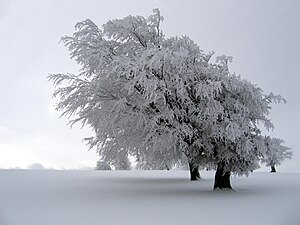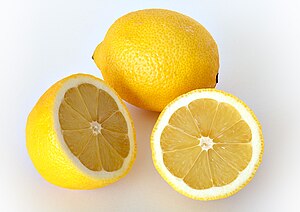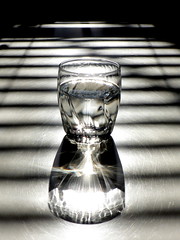Itchy, red, flaky skin is no fun. When your skin is in bad health, it’s hard to focus on anything else. Because skin is the body's largest organ, your general health can be affected by its condition. When it’s shredded and bleeding from raking it with your fingernails, you expose yourself to all sorts of topical infections that can eventually affect other biological systems.
The good news is that you can alleviate dry itchy skin by knowing the causes and then by changing your routine accordingly.
1. Long, hot showers and baths. Soaking in hot tubs and lingering under a hot shower actually strips your skin of the natural oils that protect it.
What you can do: Opt for showers over baths, and use lukewarm water, not hot. Wash quickly without lingering. When toweling off, pat your skin (don't rub) then apply moisturizer immediately.
2. Medications: Itchy skin can be a side effect of certain medications, like retinoids which treat acne, antihistamines for allergies, and diuretics for high blood pressure.
What you can do: If you notice the onset of dry skin after starting a new medication, tell your doctor, who can alter the dosage or possibly prescribe another drug.
3. Sun exposure: Prolonged exposure to the sun can cause many unwelcome skin changes including dryness, wrinkles, lowered immunity against skin infections and skin cancer.
What you can do: Always use sunscreen with a SPF of 15 or higher. Apply approximately 1 ounce to cover all sun-exposed skin. Cloudy day? Reach for the sunscreen anyways. Skin-damaging ultraviolet light can penetrate clouds, fog, even snow.
4. Harsh, antibacterial soaps that create lots of lather. They also strip skin of natural oils. Many people have the tendency to use lots of soap and scrub every inch of their body.
What you can do: Look for a mild, fragrance-free soap cleanser. Also, unless you’ve been outside digging a ditch, you probably aren’t really that dirty. The only parts that need soap are face, hands, feet, groin and underarms. The rest can usually be rinsed with warm water.
5. Moisturizing mistakes. Applying moisturizer after you’re completely dried off from the shower won’t do much good. And while scents like Coconut Lime Verbena and Wild Honeysuckle might do wonders for your sense of smell, they won’t do much to alleviate winter itch.
What you can do: The best lotions for skin are mild, fragrance-free with no perfumes. Have it ready to apply as soon as you get out of the shower. You shouldn’t be sopping wet; pat dry first, then apply cream or lotion.
6. Dry Air: While cold, winter air certainly contributes to winter itch, the warm air indoors is even more problematic.
What you can do: Turn down the thermostat a few degrees and put a humidifier in rooms where you spend most of your time. When outdoors, bundle up from head to toe. Long, knee-socks which will help protect legs from cold air that swoops up under your pant legs.
7. Wool and other itchy fabrics. That new wool sweater may look great, but if it’s making you itch, is it worth it? Not if you have severely dry itchy skin.
What you can do: When you try on clothing, pay attention to how it feels on your skin. If it scratches you in the store, it’ll scratch you later. Cashmere and cotton are the best choices if you are experiencing dry skin.
8. Genetics: Your dry itchy skin could be the result of genetics. Inherited conditions include ‘ichthyosis’ (fish-scale skin), ‘xerosis’, ‘asteatosis’ or ‘acquired ichthyosis’. The dry areas may result in ‘dermatitis’ in which the skin becomes red and itchy.
What you can do: In addition to the aforementioned tips, apply a super thick emollient liberally and often, particularly after bathing, and when itchy. If the condition worsens, see your doctor.
9. Hormonal changes: The powerhouse hormone estrogen stimulates production of skin-smoothing collagen and oils. That's why, as menopause approaches and estrogen production diminishes, dry itchy skin becomes very common.
What you can do: In addition to the aforementioned tips, eat a diet that’s rich in essential fatty acids -- like the omega-3s found in sardines, soy, safflower oil, flax, salmon, walnuts, and fortified eggs. A diet short of these body-boosting fats can leave skin dry, itchy, and prone to acne. You can also keep skin hydrated by drinking lots of water. According to The Mayo Clinic, there are no hard and fast rules about how much is enough; but a good guideline is the “8 x 8 rule”: eight 8 oz. glasses per day.
10. Smoking: Tobacco smoke contains roughly 4,000 chemicals, many of which are carcinogenic. In addition to damaging lungs and eventually, other organs, you also expose your skin to toxic chemicals which trigger oxidation. This results in free radicals which literally attack skin cells, resulting in the yellowed, craggy dry skin associated with smokers.
What you can do: Do everything in your power to quit. Meanwhile, exercise will improve circulation and the distribution of oxygen and nutrients. Also, load up on Vitamin C and other antioxidants to remove or minimize the cause of cellular damage.
By: Jenny Gaglione
Article Directory: http://www.articledashboard.com
Jenny Gaglione is a Cleveland, Ohio writer specializing in healthcare topics. She is married with 2 children and is in her early 40s. Jenny writes about anti-aging issues at www.antiagingreport.org/. Visit the web site for new information and discount offers on top quality anti-aging skincare products.
 Image via Wikipedia
Image via Wikipedia

![Reblog this post [with Zemanta]](http://img.zemanta.com/reblog_e.png?x-id=18798e56-0525-49f8-bec6-4d32501a164f)

![Reblog this post [with Zemanta]](http://img.zemanta.com/reblog_e.png?x-id=6c6cd6fa-1316-4070-b60c-0bf4374466b9)

![Reblog this post [with Zemanta]](http://img.zemanta.com/reblog_e.png?x-id=bcbcab74-f760-472e-9f8e-32a8c96ddc3d)

![Reblog this post [with Zemanta]](http://img.zemanta.com/reblog_e.png?x-id=37b5732a-93ca-44e4-828a-1691ca68eb65)
![Reblog this post [with Zemanta]](http://img.zemanta.com/reblog_e.png?x-id=7604bcf5-4fe1-42b8-900c-86c3e446529d)

![Reblog this post [with Zemanta]](http://img.zemanta.com/reblog_e.png?x-id=06f8fd47-024f-4e76-b203-ce8a3b3e94ff)

![Reblog this post [with Zemanta]](http://img.zemanta.com/reblog_e.png?x-id=1c8c1610-2c45-4888-a66b-f652f09aeb2b)
![Reblog this post [with Zemanta]](http://img.zemanta.com/reblog_e.png?x-id=4b14a207-8f43-4671-930b-5cea3ba4f124)

![Reblog this post [with Zemanta]](http://img.zemanta.com/reblog_e.png?x-id=6bd8f4db-eb07-4d5b-a11a-543278e9e5d5)
![Reblog this post [with Zemanta]](http://img.zemanta.com/reblog_e.png?x-id=af0809a4-cb69-49c2-a466-1a3ac62a581b)
![Reblog this post [with Zemanta]](http://img.zemanta.com/reblog_e.png?x-id=6d0b0c1f-7621-4d2f-a82c-c842658db20c)

![Reblog this post [with Zemanta]](http://img.zemanta.com/reblog_e.png?x-id=ba9be9b9-a604-4b97-991a-74bc2478b518)
![Reblog this post [with Zemanta]](http://img.zemanta.com/reblog_e.png?x-id=18c90ac1-5dfd-49c1-87c2-f730b7cbbf64)
![Reblog this post [with Zemanta]](http://img.zemanta.com/reblog_e.png?x-id=a434e702-f51e-4187-b652-a344d81b7bab)
![Reblog this post [with Zemanta]](http://img.zemanta.com/reblog_e.png?x-id=522bf14e-d637-4f3c-9859-343f42a8e126)

![Reblog this post [with Zemanta]](http://img.zemanta.com/reblog_e.png?x-id=97ce3389-9dd1-48e9-b1f3-26acfed57596)

![Reblog this post [with Zemanta]](http://img.zemanta.com/reblog_e.png?x-id=ada002c9-7186-435e-be90-6d23d18ea867)

![Reblog this post [with Zemanta]](http://img.zemanta.com/reblog_e.png?x-id=25d136bc-9ccb-4884-96ce-113f3bd2b97c)

![Reblog this post [with Zemanta]](http://img.zemanta.com/reblog_e.png?x-id=c39afc61-76ad-4de6-aaeb-65a21f622d6d)

![Reblog this post [with Zemanta]](http://img.zemanta.com/reblog_e.png?x-id=962e032d-2926-421f-ad16-93d5b8255b50)